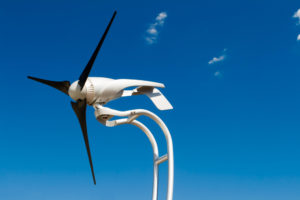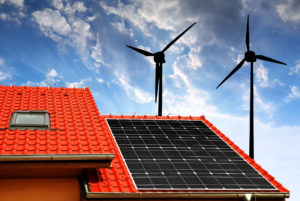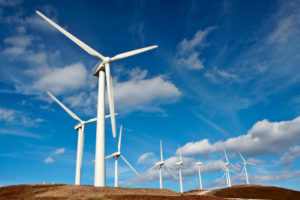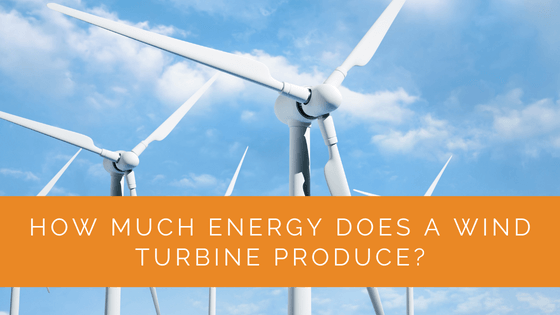Wind turbine blades can spin on slopes, in the water, next to companies, and over residences. Allowing nature to produce electricity for your house may seem tempting. However, before purchasing one, it’s critical to understand how and where to place a turbine and calculate its output.
Let us first dive into the basic procedure of the whole process.
Contents
- 1 Key Takeaways
- 2 What Is Wind Energy?
- 3 What Are Wind Turbines?
- 4 How Exactly Do Wind Turbines Generate Power?
- 5 How Much Power Could a Wind Turbine Generate?
- 6 Essential Components of Wind Turbine
- 7 The function of Wind Turbines
- 8 How Effective Is Wind Energy?
- 9 Alternate Current or Direct Current: Which One Do Wind Turbines Produce?
- 10 Is Wind Energy the Future?
- 11 Expert Insights From Our Solar Panel Installers About Wind Turbine Energy Production
- 12 Conclusion
Key Takeaways
- Wind energy is currently the least expensive and most widely available renewable energy source in the United States, with over 60,000 wind turbines producing enough power for over 32 million households.
- Most onshore wind turbines have a 2-3 MW capacity and can generate more than 6 million kWh of power per year, depending on wind speed. Wind farms are strategically located in areas with consistent high winds.
- Wind turbines produce alternating current (AC), but some come with converters to transform it into direct current (DC) to match the electrical system’s frequency. The future of wind energy varies by region, with smaller and larger turbines both playing a role in the transition to sustainable energy sources.
What Is Wind Energy?
People have been harnessing wind energy for a long time. The wind has propelled boats down rivers to draw water and processed grain, boosted food production, and done various other things. The velocity and power of natural air motions, defined as wind, are currently used in generating electricity on a large scale.
Wind energy is currently the least expensive and most widely available source of renewable energy available in the United States. Over 60,000 turbines with a combined capacity of 105,583 MW are in operation. This is enough to power over 32 million households!
What Are Wind Turbines?
An onshore or offshore wind turbine is a unit that transforms wind kinetic energy into power. Based on design, wind turbine blades revolve between 13-20 revolutions per minute at a variable or constant wind speed, where the velocity of the rotor fluctuates in proportion to wind velocity to achieve higher efficiency.
Onshore wind turbines have a life expectancy of more than 30 years. Offshore ones may have a longer life expectancy. Wind turbine endurance has increased due to the rapid advancement of wind technology.

How Exactly Do Wind Turbines Generate Power?
We all know that the world needs more renewable energy companies. Regardless of your position on climate change, it would be best to acknowledge that fossil fuels are a limited resource that will eventually run out.
We must find alternative energy sources in our comfortable civilizations with complex electrical systems.
Renewable energy resources include solar, wind, geothermal, and biomass. Whereas no one strategy will provide the answer, integrating them will assist in leading the way forward.
Wind turbines are a whole other type of renewable energy that is quickly developing across the globe. These gigantic structures are purposefully placed in places that receive high winds to enhance their potential to generate power.
How Much Power Could a Wind Turbine Generate?
Most onshore wind turbines have a 2-3 MW capacity and can generate more than 6 million kWh of power per year. That is sufficient to cover the electrical needs of around 1,500 ordinary families.
Strong winds usually have high speeds, and more power is created up to a certain point. Doubling the wind speed generates approximately eight times more energy. However, turbines automatically shut down if the wind is too strong to avoid damage.
All of this implies that a wind turbine’s capacity to create the highest electricity level depends on the wind. Wind farms are meticulously planned to ensure they are located in areas with consistent wind all year. This is why offshore wind farms are so popular since the tidal currents of the sea generate high-velocity winds.
This usually exists on the crest of hilltops with plenty of open areas along the shore.

Essential Components of Wind Turbine
The turbine is simply one component of these devices. Another critical component of most turbines is the gearbox. Gears in the gearbox transform the comparatively slow rotations of the blades into elevated action, spinning the drive shaft rapidly enough to start the power generator.
The generator is a fundamental component of all turbines and may be considered a massive, scaled-up bicycle version. When one cycles, the dynamo attached to the rear wheel spins and creates electricity enough to light a bulb.
The exact process occurs in a wind turbine, except that the “dynamo” is powered by the turbine’s blades rather than a wheel, and that “lamp” is electricity in somebody’s home thousands of miles away.
The function of Wind Turbines
- Turbines are fairly easy to understand and can typically be better understood than classic windmills that use wind energy to crush grain.
- As wind flows across the blades of a wind turbine, it is caught, after which the turbine starts to rotate. This energy is called mechanical energy.
- Unlike typical windmills, wind turbine shafts are linked with a gearbox that greatly increases the speed – often by 100x.
- The spinning movement is a result of the power generator. The mast supports the rotor and nacelle, while the mechanical components are located within the nacelle. Steel is usually used to build the tower and the mast.
- The turbine blades are constructed of glass fibers or carbon fiber reinforced with epoxy or glass fiber reinforced with polyester, making them highly durable and lightweight. As a result, they spin even in fairly moderate winds.
- Wind turbine blades are comparable to airplane wings; wind drives the turbine to spin because the pressure of pull is greater than the pressure of drag. There are three because this offers the finest mechanical reliability and rotational speed balance.
- The gears connect the generator to the rotors, thus doubling the speed of rotation. This enables the generators to produce electricity while remaining compact and affordable.
- Computers manage these blades’ pitch as well as the direction they point to maximize output.
- Onshore turbines typically generate 2.5 to 3 megawatts (mW) and feature blades as long as 50 meters. To put things in perspective, this would amount to half a football field in length!

How Effective Is Wind Energy?
Wind power is a dependable renewable energy source since it blows all year. It is also windier in the winter, which means wind turbines can generate higher power during a season when we need the most electricity.
These factors place the United States in an excellent position to capitalize on both onshore and offshore wind energy and lessen its dependency on fossil fuels.
Another advantage is the minimal carbon footprint caused by wind farms, making them one of the lowest among modern renewable sources.
Alternate Current or Direct Current: Which One Do Wind Turbines Produce?
Turbines produce AC or alternating current. Several turbines come with a converter that transforms alternating current (AC) to direct current (DC) and back. The primary purpose is to keep the frequency the same as the system to which they’re linked.
The difference between the two currents is that while DC always flows in a single direction, AC electrons frequently change directions.
Is Wind Energy the Future?
It undoubtedly plays a role, but its significance depends on where you live and whether you have better choices tailored to your local environment. Solar would most likely be less expensive in bright Australia. Wind turbines might be a significant contender in nations with windy winters.
However, we see the future toward both ends of the scale – small wind turbines that can sit as comfortably as an antenna on top of a property’s roof for the microgeneration of energy. Conversely, we will see more and more utility-scale turbines that easily cross 100 kW in size!
Countries with many fossil-fuel plants and no intentions to retire soon may find investing in carbon capture and storage a prudent choice, but this is a largely untested technology. Finally, it is a political decision and also a scientific one.
Expert Insights From Our Solar Panel Installers About Wind Turbine Energy Production
Understanding how much energy a wind turbine can produce is crucial for anyone considering wind energy. Most onshore wind turbines have a capacity of 2-3 MW and can generate over 6 million kWh of power per year, depending on the wind conditions.
Senior Solar Installer
Proper placement of wind turbines is key to maximizing energy output. They are often installed in areas with consistent high winds, such as offshore locations or hilltops, to ensure they can generate the highest possible amount of electricity.
Lead Solar Technician
The technology behind wind turbines, including the gearbox and generator, is designed to efficiently convert wind energy into electrical power. This process is similar to how a bicycle dynamo generates electricity, but on a much larger scale.
Renewable Energy Specialist
One of the significant benefits of wind energy is its minimal carbon footprint. Wind farms are one of the cleanest renewable energy sources available, making them a sustainable choice for large-scale energy production.
Solar Installation Consultant
Conclusion
Wind power generation continues to have one of the lowest carbon footprints. It is essential to the long-term sustainability of our country’s energy supply, supporting global energy transition and the growing need for sustainable energy supplies.
The wind is also among the most effective ways for enterprises, colleges, communities, utilities, and other organizations to switch to emission-free energy on a massive scale. For 10-25 years, a single virtual power purchase agreement (VPPA) could ensure tens to thousands of megawatts of net zero energy.
About the Author
Solar Panels Network USA stands at the forefront of solar energy solutions, driven by a team of seasoned solar engineers and energy consultants. With over decades of experience in delivering high-quality solar installations and maintenance, we are committed to promoting sustainable energy through customer-centric, tailored solutions. Our articles reflect this commitment, crafted collaboratively by experts to provide accurate, up-to-date insights into solar technology, ensuring our readers are well-informed and empowered in their solar energy decisions.

